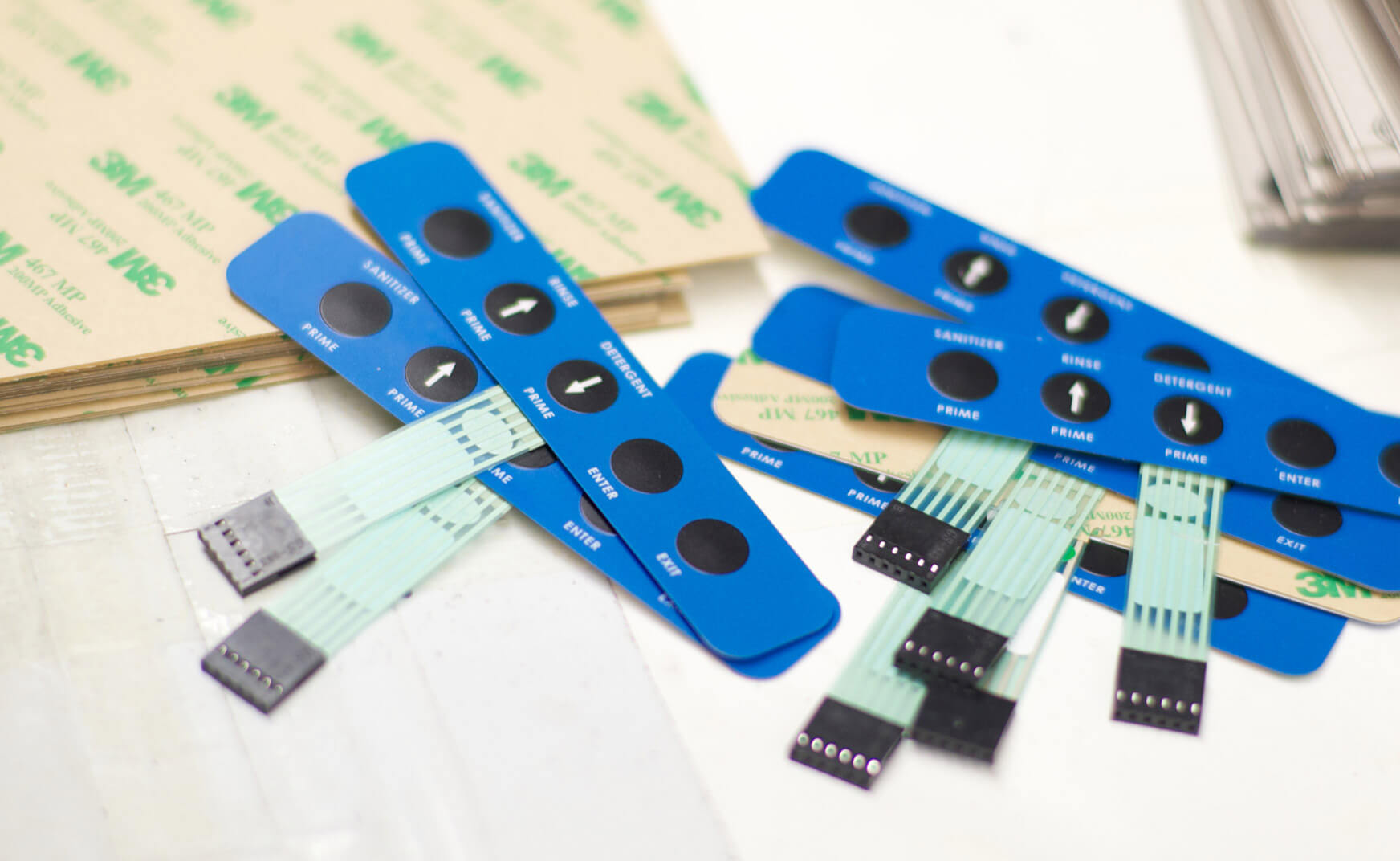Exactly How a Membrane Switch Enhances User Experience and Tool Effectiveness
Exactly How a Membrane Switch Enhances User Experience and Tool Effectiveness
Blog Article
The Duty of Membrane Layer Switches in Enhancing Gadget Usability and Visual Appeal
Membrane layer switches over represent a considerable development in individual interface modern technology, seamlessly incorporating usability with aesthetic appeal. Their design is not just functional, providing responsive controls in a small form, yet likewise adjustable, permitting unique branding and aesthetic engagement. As markets progressively prioritize individual experience, the ramifications of these functions expand past plain ease, affecting item layout and customer complete satisfaction. What remains to be explored is just how these components will advance in feedback to arising fads and technical innovations, forming the future of human-device communication.
Understanding Membrane Layer Change Technology

The visuals overlay functions as the noticeable surface, commonly printed with signs and tags that direct customer interaction. Underneath this layer, the spacer acts as a separator, making sure that the conductive layer just makes contact when a switch is pressed. The conductive layer, normally made of a conductive ink or material, finishes the circuit and sends out signals to the tool's electronics.
Longevity is a significant benefit of membrane layer switches, as they are resistant to wetness, dirt, and impurities, making them suitable for various atmospheres. In addition, membrane switches can be personalized in regards to form, dimension, and layout, allowing producers to customize user interfaces to specific device requirements. This flexibility contributes to their extensive use across markets, from customer electronics to medical devices.
Functionality Advantages of Membrane Layer Buttons
The usability advantages of membrane layer buttons are evident in their instinctive design and user-friendly features. These switches facilitate straightforward interaction by incorporating responsive responses and identifiable signs, which improve the user experience through clear interaction of feature (Membrane Switch). The flat profile of membrane switches permits easy assimilation right into different tools, reducing the discovering contour for customers unknown with intricate controls
In addition, membrane layer buttons are commonly created with sensitivity in mind, enabling customers to engage with controls effortlessly. This particular is especially advantageous in settings where quick reactions are critical, such as clinical gadgets and industrial equipment. Their resistance to dampness and pollutants further makes certain trustworthy operation, advertising individual confidence in varied settings.
Moreover, membrane switches can be tailored to fit specific applications, suiting distinct customer requirements and choices. This flexibility fosters a sense of possession among customers, as they can communicate with controls that really feel tailored to their needs.
Aesthetic Enhancements Via Style
Visual enhancements play a substantial function in the total appeal and capability of devices furnished with membrane buttons. These switches use functional style opportunities that can be tailored to satisfy brand name identity and customer preferences. The capability to include lively shades, personalized graphics, and varied appearances allows producers to develop visually striking user interfaces that resonate with customers on an emotional degree.
The adaptability of membrane switch style additionally helps with the combination of one-of-a-kind shapes and designs, adding to a structured look that enhances the customer experience. This not only makes tools more attractive however likewise help in instinctive navigating, as users can easily determine useful areas and controls. Additionally, advanced printing innovations make it possible for the reproduction of complex layouts and high-resolution photos, better raising the visual top quality.
In addition, the use of backlighting in membrane buttons can considerably enhance visibility and appeal, especially in low-light settings. This mix of aesthetic appeals Going Here and performance promotes an appealing user experience, making devices not just extra delightful to utilize but also more straightened with modern style patterns. Ultimately, aesthetic improvements via cautious membrane layer switch design can change average gadgets into compelling, straightforward items.
Applications in Different Industries
In numerous industries, membrane layer switches have come to be important elements that enhance capability and functionality across a variety of gadgets. These innovative buttons discover applications in sectors such as medical care, consumer electronic devices, vehicle, and industrial tools.
In the medical care market, membrane layer switches are commonly made use of in clinical gadgets, such as analysis equipment and client surveillance systems, where they offer intuitive user interfaces that improve customer interaction while maintaining health. In consumer electronic devices, membrane switches promote user-friendly controls in home appliances, remote controls, and pc gaming gadgets, supplying seamless operation and visual appeal.

Future Trends in Membrane Buttons
Emerging fads in membrane layer switches are set to transform interface across numerous applications, driven by innovations in modern technology and raising customer demands for functionality and layout. One remarkable pattern is the consolidation of capacitive touch innovation, which offers a more receptive and contemporary customer experience contrasted to conventional mechanical switches (Membrane Switch). This change not only boosts functionality however likewise enables sleeker tool visual appeals
In addition, the combination of customizable graphics and backlighting is coming to be progressively popular. Suppliers are leveraging ingenious printing techniques and LED technology to develop aesthetically engaging interfaces that deal with details customer needs while enhancing tool visibility in different lights conditions. This personalization fosters a more powerful psychological connection in between individuals and their devices.

Conclusion
In verdict, membrane layer changes considerably improve both usability and visual appeals in modern tools. As markets continue to advance, the convenience and ingenious potential of membrane layer buttons will likely play an increasingly crucial function in device layout and user why not try these out experience.
Report this page